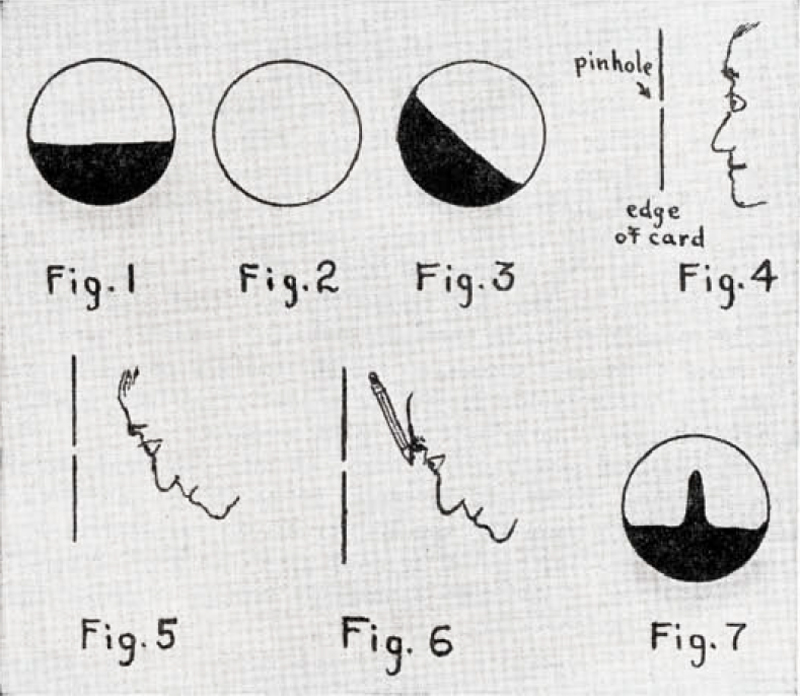
Three or four years ago I was much troubled with a flattening of my rear sight aperture in smallbore indoor shooting under artificial light, especially in the sitting and kneeling positions. With a rifle perfectly sighted in the prone position, I would get wandering groups sitting, accompanied by the flattened aperture.
After much time spent experimenting with sight combinations I finally determined the reason for the flattening of the aperture, which immediately showed the way to stop the groups from wandering.
I have explained this to many shooters, among them Marine team men, and none of them had heard of it before. As it has helped others I offer it here at the risk of being shown that I have made a "discovery" already known and elsewhere described. The optical-physical explanation is left for someone qualified in that field and this discussion will be confined to the effect and the remedy.

No doubt every shooter has experienced having his rear sight look more or less similar to Figure 1, instead of looking round, as it actually is, as in Figure 2. Now, having met the condition, what makes it look that way? Well, the black portion of Figure 1 is an inverted image of your brow, and the amount of flattening depends upon how far forward you incline your head. And if you tip your head to the right as well as forward the sight will look like Figure 3. Your shots will be around 8 o'clock and will be probably 8's or 9's, maybe nippers, depending upon the amount and direction of inclination for each shot.
The above statements, when first made, always have drawn a look of disbelief, but they are easily proven to the disbeliever's satisfaction.
Take a card and punch a pinhole in it about the size of your rear aperture. Hold it an inch or two from your eye and look at a brightly illuminated surface. If held squarely in front of your face as in Figure 4 you will see a perfectly round hole. Now tip your head as shown in Figure 5 and the hole will look like Figure 1. Tip you head sideways and you will have Figure 3.
For the final step of the proof, hold a match stick, wire, or pencil against your eyebrow while looking through the aperture at an angle (Figure 6), and move it into the line of sight and then move it up and down. You will see what looks like Figure 7, which shows that whatever is cut off the bottom of your aperture is done by an inverted image of your forehead. And your shots will be in the direction of the blanked-off portion.
The remedy is immediately apparent. Sitting or kneeling, take up your sling a little more, straighten out your backbone and sit more erect, facing the sight squarely for a truly circular aperture. Your wandering groups will wander back to center and stay there. That is, if your position lines your rifle on your target without strain, if you breathe properly, if you hold 'em, if you squeeze 'em, if you don't flinch. In other words, this article deals only with the sight picture.

































